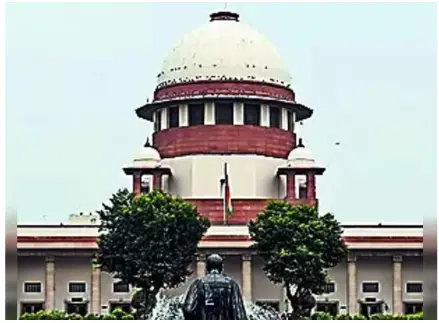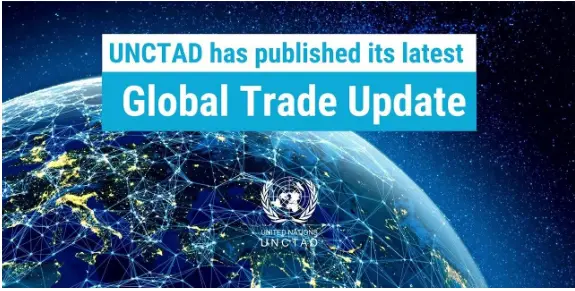Monday, 20th May 2024
Global Report on Neglected Tropical Diseases 2024
In News: Before the 77th session of the World Health Assembly, the World Health Organization (WHO) unveiled its 2024 Global report on neglected tropical diseases (NTDs).
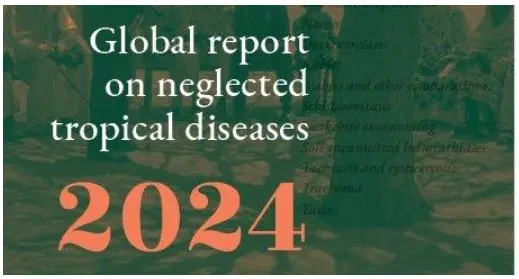
Key Highlights of the WHO Report
- Global Status for 2023
- By December 2023, 50 countries had successfully eliminated at least one neglected tropical disease (NTD), halfway towards the goal of 100 countries by 2030.
- Iraq became the 50th country to eliminate at least one NTD in July 2023, signifying significant progress.
- Noma was newly classified as an NTD in 2023.
- Bangladesh was validated by WHO for eliminating visceral leishmaniasis as a public health problem in October 2023.
- Global Status for 2022
- In 2022, 1.62 billion people required interventions against NTDs, showing a 26% decrease from 2010.
- Approximately 848 million people received treatment for at least one NTD in 2022, with a slight decrease from the previous year but an increase from 2020.
- Reported deaths from vector-borne NTDs increased by 22% compared to 2016.
- India
- India achieved certification for being free of NTDs like dracunculiasis and yaws.
- However, India treated about 117 million fewer people for lymphatic filariasis and soil-transmitted helminthiasis in 2022 compared to 2021.
- 40.56% of India's population needed interventions against NTDs in 2022.
Key Facts About Neglected Tropical Diseases (NTDs)
- NTDs are caused by various pathogens and have severe health, social, and economic consequences, predominantly affecting impoverished tropical communities.
- Factors contributing to NTDs include complex epidemiology related to environmental conditions, vector-borne transmission, animal reservoirs, and intricate life cycles.
- Despite their significant impact, NTDs receive substantially less funding for research and treatment compared to diseases like HIV/AIDS, malaria, and tuberculosis.
Global and Indian Initiatives to Tackle NTDs
- Global Initiatives
- WHO's 2021-2030 Roadmap prioritizes impact and collaboration across healthcare, sanitation, and communities to eliminate NTDs.
- The 2012 London Declaration promotes a unified approach to address the global burden of NTDs.
- Indian Initiatives
- India has successfully eliminated several NTDs and aims to eliminate lymphatic filariasis by 2027 through programs like APELF.
- Collaborations with WHO and regional alliances, such as the initiative with Bangladesh and Nepal, focus on early diagnosis and treatment of NTDs.
- Mass Drug Administration (MDA) and vector control programs are implemented to prevent NTD transmission.
- Financial assistance schemes aid individuals affected by NTDs, particularly those with Post-Kala Azar Dermal Leishmaniasis, in managing the financial burden of their illness.
Conclusion
The 2024 WHO report highlights progress in combating NTDs, with several countries achieving elimination milestones. However, challenges such as funding gaps and the lingering effects of COVID-19 threaten further progress. Increased collaboration at national and global levels is essential to achieve the goal of eradicating neglected tropical diseases.
|
UPSC Previous Year Questions Prelims (2017) Q. Which of the following are the objectives of ‘National Nutrition Mission’?
Select the correct answer using the code given below: (a) 1 and 2 only (b) 1, 2 and 3 only (c) 1, 2 and 4 only (d) 3 and 4 only Ans: (a) Mains (2021) Q. “Besides being a moral imperative of a Welfare State, primary health structure is a necessary precondition for sustainable development.” Analyse. Mains (2018) Q. Appropriate local community-level healthcare intervention is a prerequisite to achieve ‘Health for All’ in India. Explain. |
Source: WHO
NIA’s allegations against NSCN
In News: In March 2024, the National Investigation Agency (NIA) lodged a charge sheet in a Guwahati court, implicating the "China-Myanmar module" associated with the Isak-Muivah faction of the National Socialist Council of Nagaland (NSCN).
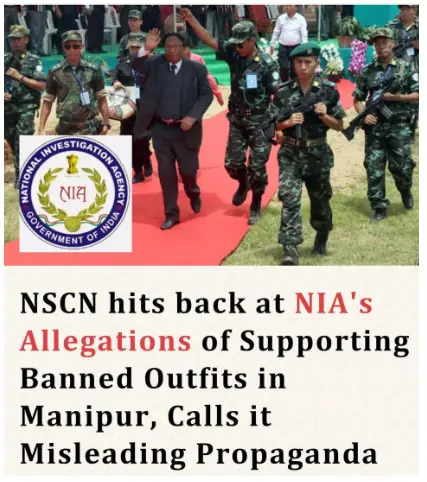
Ethnic Composition of Manipur
- The Meitei, Naga, and Kuki-Zomi-Mizo are the primary ethnic groups in Manipur.
- The Meiteis constitute the largest community, representing around 53% of the state's total population of 27.21 lakh (2011 Census).
- The Nagas and the Kuki-Zo, classified into 34 Scheduled Tribes, make up approximately 17% and 26% of the population, respectively.
Insurgency in Manipur
- Background
- Manipur's incorporation into India sparked the emergence of several insurgent organizations.
- These groups advocate for an independent state within Manipur's borders, rejecting its merger with India as involuntary.
- The insurgency issue in Manipur arose in the late 1960s and 1970s, following its merger with India.
- Rise of Insurgency
- The United National Liberation Front (UNLF), founded in November 1964, was the first separatist faction.
- The insurgency intensified in the 1990s with the onset of Kuki-Naga clashes, triggered by the NSCN's demand to include Kuki-Zo-inhabited areas in its proposed 'Greater Nagaland' project in the 1980s.
- Insurgent groups demand independent territory for the Kuki-Zo people.
- Active Insurgent Groups
- Nearly 30 Kuki insurgent groups operate in Manipur, with 25 under tripartite Suspension of Operations (SoO) with the Government of India and the state.
- In 2008, 24 Kuki-Zo insurgent groups signed a tripartite SoO pact with the Manipur government, but in February 2024, the government refused to extend the pact, alleging violations by the groups.
Naga Insurgency
- Background
- The Naga National Council (NNC) was established in April 1946 for the social and political upliftment of Nagas.
- The return of Naga leader Angami Zapu Phizo in 1947 bolstered the faction advocating for full independence.
- Shillong Accord and Split of NNC
- The Shillong Accord of 1975, signed by a faction of NNC leaders, aimed to resolve the Naga problem within the Indian Constitution, opposed by Phizo, Isak Swu, and Muivah.
- Isak Swu and Muivah later formed the National Socialist Council of Nagaland (NSCN) in January 1980, which subsequently split into NSCN (I-M) and NSCN (K).
- Demand for Greater Nagaland
- NSCN-IM has been demanding 'Greater Nagaland,' an extension of Nagaland's borders to include Naga-dominated areas in neighboring states, along with a separate flag and constitution.
- Naga Peace Accord
- Since 1997, NSCN (I-M) has engaged in negotiations with the Government of India, culminating in the 2015 Framework Agreement aimed at resolving the Naga issue.
- Recent Developments
- Talks broke down in June 2022 after NSCN accused the Indian government's appointed interlocutor of excluding crucial political points.
- Ethnic Violence in Manipur
- Ethnic violence erupted on May 3, 2023, between the Meitei majority and the Kuki-Zo tribal community following protests over demands for official tribal status for the Meiteis.
- The National Investigation Agency (NIA) filed a charge sheet accusing NSCN-IM of conspiring with intent to carry out violent terror attacks targeting the Kuki-Zo community.
- NSCN's Allegation
- The NSCN issued a statement accusing Indian security forces of aiding Kuki militant groups in Myanmar to wage war against Meitei revolutionary groups.
Source: TH
HPV Vaccine and Cervical Cancer
In News: According to a significant study supported by Cancer Research UK, the HPV vaccine is effectively lowering the incidence of cervical cancer, with reductions observed across various socio-economic strata.
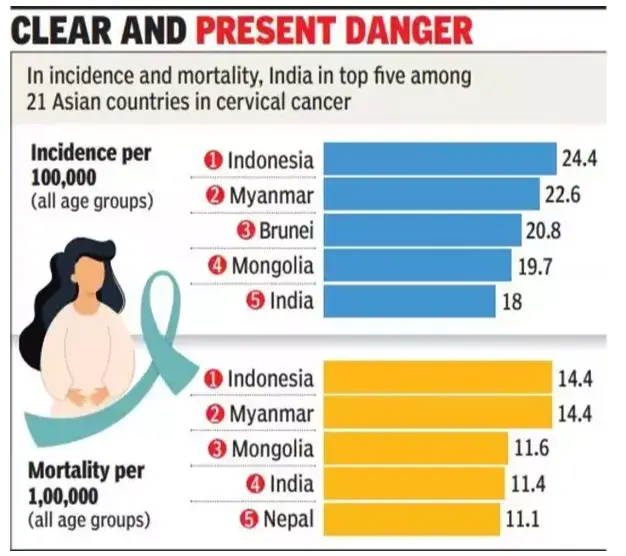
Understanding Cervical Cancer
- Overview
- Cervical cancer is primarily caused by certain strains of the human papillomavirus (HPV), which is commonly transmitted through sexual contact.
- While the body's immune system typically clears HPV infection within two years, in a minority of cases, the virus persists, leading to the transformation of normal cells into cancerous ones.
- Prevalence in India
- Cervical cancer ranks as the second most prevalent cancer type and the second leading cause of cancer-related deaths among women aged 15-44 globally.
- India bears a significant burden, accounting for approximately one-fifth of the global incidence, with 1.23 lakh cases and around 67,000 deaths annually, equating to one woman succumbing to the disease every eight minutes.
- Preventive Measures
- Early detection and effective management are pivotal in preventing cervical cancer.
- Cervical cancer screening and HPV vaccination are two crucial preventive strategies, although awareness among women remains low, with less than 10% of Indian women undergoing screening.
- Available Vaccines in India
- India's first domestically developed vaccine, CERVAVAC, offers protection against cervical cancer and is based on virus-like particles (VLP) technology, similar to the hepatitis B vaccine.
- Additionally, two globally licensed vaccines, Gardasil and Cervarix, are available in India, although their high cost renders them inaccessible to the majority of the population.
- Inclusion in Universal Immunization Programme
- An affordable HPV vaccine, developed domestically, is poised to be integrated into India's universal immunization programme, enhancing accessibility for all segments of society.
Key Study Findings
- Prevention Across Socio-Economic Groups
- A study revealed that the HPV vaccine effectively reduces cervical cancer cases across the socio-economic spectrum, with a greater impact observed in more deprived groups due to their higher baseline incidence rates.
- Success of School-Based Vaccination Programme
- The study underscored the success of school-based vaccination programmes, emphasizing the pivotal role of well-executed public health interventions in mitigating health inequalities.
- Effectiveness of HPV Vaccination
- Over a span of 12 years, the HPV vaccine demonstrated significant efficacy, reducing cervical cancer rates by nearly 90% and pre-cancerous conditions by approximately 95%, particularly when administered to individuals aged 12-13 years.
- Timing of Vaccination
- The study underscores the importance of administering the HPV vaccine during early adolescence, suggesting that vaccination at 12-13 years old yields superior effectiveness compared to later in life, as evidenced by England's HPV vaccination programme initiated in 2008.
Source: TH
Non-Banking Financial Companies (NBFCs)
In News: In a recent development, the RBI prohibited IIFL Finance from extending new gold loans following the discovery of the company's non-compliance with lending regulations.
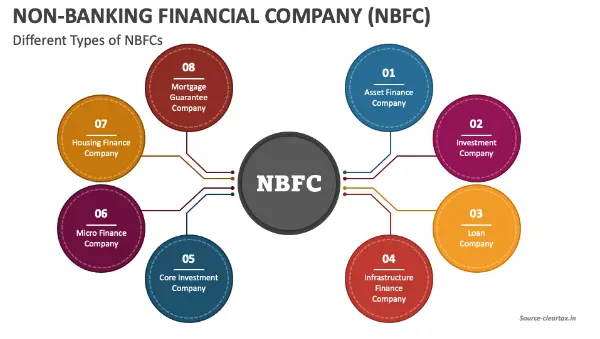
Understanding Non-Banking Financial Companies (NBFCs)
- Definition and Functions
- A Non-Banking Financial Company (NBFC) is a company registered under the Companies Act, 1956, engaged in various financial activities such as loans, advances, and investments in securities issued by the government or local authorities.
- Differences from Banks
- NBFCs differ from banks in several aspects, including their inability to accept demand deposits, issue cheques, or provide deposit insurance facilities like banks.
- Systemically Important NBFCs
- NBFCs with asset sizes exceeding ₹500 crore are classified as systemically important, considering their potential impact on the economy's financial stability.
- Financial Services Offered by NBFCs
- NBFCs provide diverse financial services, including credit provision, investment in securities, specialized financing for niche markets, and managing portfolios of stocks and shares.
- Regulatory Oversight
- In India, NBFCs are regulated by the Reserve Bank of India (RBI), which sets guidelines for their operations, ensuring compliance with capital adequacy, risk management, and governance standards.
- Contribution to the Economy
- NBFCs complement traditional banking by extending financial services to underserved segments, thereby deepening financial markets and promoting financial inclusion.
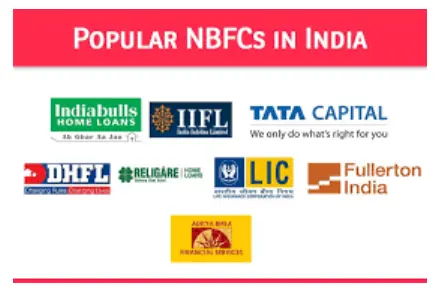
RBI's Scrutiny of NBFCs
- Increased Scrutiny
- The RBI has intensified its monitoring of NBFCs following instances of regulatory violations, such as those observed with IIFL Finance, which was barred from issuing fresh gold loans in March for non-compliance with lending norms.
- RBI's Gold Loan Norms
- The RBI mandates that lenders adhere to specific norms when offering gold loans, including restricting loan amounts to 75% of the gold's value, limiting cash disbursements to ₹20,000, and ensuring transparent auction processes for defaulted loans.
- Need for Reinforcement
- The exponential growth of NBFCs' gold loan portfolios, from ₹35,000 crore in FY 2020 to ₹1,31,000 crore by FY 2023, raises concerns about potential widespread violations of lending norms, prompting the need for stricter enforcement.
- Impact on NBFCs
- The RBI's stringent lending norms may impede NBFCs' growth and profitability by making gold loans less attractive and necessitating adjustments to lending practices to comply with regulations, potentially leading to increased borrowing costs for lenders.
- RBI's Perspective
- The RBI believes that enforcing lending norms will ensure the sustainability of the gold loan business, mitigating systemic risks and promoting long-term financial stability.
Source: TH
National Endangered Species Day
In News: The global observance of National Endangered Species Day took place recently.
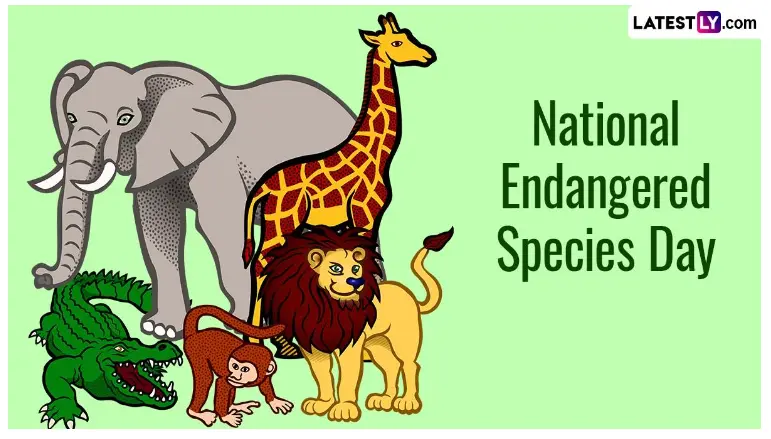
Understanding National Endangered Species Day
- Overview
- National Endangered Species Day aims to raise awareness about the impacts of human activities on endangered species and emphasizes collective efforts to safeguard them.
- Annual Observance
- Each year, National Endangered Species Day is commemorated on the third Friday of May, highlighting the importance of conservation.
- Historical Background
- In 2006, David Robinson and the Endangered Species Coalition established National Endangered Species Day as an annual event to rally individuals to contribute to the protection of endangered species.
- Statistics on Endangered Species
- According to the International Union for Conservation of Nature, forty percent of animals, insects, and plants worldwide are currently facing the risk of extinction.
- Theme for 2024
- The theme for the year 2024 is "Celebrate Saving Species," emphasizing the importance of celebrating successful conservation efforts.
- Significance
- National Endangered Species Day serves to promote conservation initiatives and encourages individuals and organizations to engage in activities that support the protection of endangered species.
- This includes activities such as habitat restoration, advocating for conservation laws, and supporting stronger environmental policies.
Source: HT
Iberian Lynx
In News: The Spanish government recently announced that the population of endangered Iberian lynx in the wild in Spain and Portugal has almost doubled since 2020.
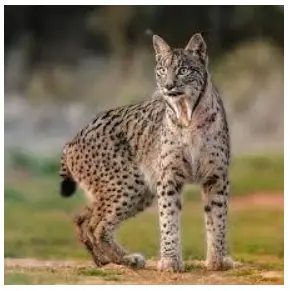
Overview of the Iberian Lynx
- Endemic Carnivore Species
- The Iberian lynx is one of only two carnivore species native to Europe, the other being the European mink, Mustela lutreola.
- Endangered Status and Distinctive Features
- Renowned as the world's most endangered feline, the Iberian lynx is characterized by its distinctive pointed ears, long legs, and leopard-like spotted fur.
- Sexual Dimorphism and Nocturnal Behavior
- Similar to other cat species, the Iberian lynx displays sexual dimorphism, with males typically being heavier and longer than females.
- Generally nocturnal, its activity patterns closely mirror those of its primary prey, the rabbit.
- Habitat Requirements
- The Iberian lynx thrives in variable terrain below 1300 meters, favoring habitats consisting of a blend of closed Mediterranean scrubland and open grassland patches, often with marsh ecotones.
- Distribution and Decline
- Once widespread throughout the Iberian Peninsula, the species now experiences sparse distribution mainly in Spain and Portugal.
- Threats from Human Activities
- The survival of the Iberian lynx is imperiled by various human-induced threats, including poaching, habitat destruction, illegal hunting, and a dwindling food base.
- Conservation Status
- Classified as Endangered on the IUCN Red List, the Iberian lynx is also listed under Appendix II of CITES, highlighting the urgency of conservation efforts to safeguard its future.
Source: TH
SPECULOOS-3b
In News: A recent discovery by an international team of astronomers unveiled a newly detected Earth-sized planet named SPECULOOS-3b. Situated just 55 light years away, it orbits an ultra-cool red dwarf star.

Overview of SPECULOOS-3b
- Characteristics of the Planet and Its Star
- SPECULOOS-3b is an Earth-size planet found orbiting an ultracool red dwarf star situated 55 light-years away from Earth.
- Despite being similar in size to Jupiter, this red dwarf emits light that is 100 times dimmer than the sun and has half its temperature.
- Unique Discovery and Environmental Factors
- This planet represents only the second of its kind discovered around a star of this type.
- SPECULOOS-3b is exposed to high levels of radiation from its sun, potentially leaving it devoid of an atmosphere, receiving approximately 16 times more energy per second than Earth from the Sun.
- Orbital Characteristics and Tidal Locking
- The planet completes an orbit around its star in approximately 17 hours.
- It is believed to be tidally locked, meaning that one side, termed the dayside, always faces the star, akin to the Moon's relationship with Earth, while the nightside remains in perpetual darkness.
- Discovery and SPECULOOS Project
- The discovery of SPECULOOS-3b was made by the SPECULOOS (Search for Planets EClipsing ULtra-cOOl Stars) project team, led by the University of Liège in Belgium.
- This collaborative effort involved universities such as Birmingham, Cambridge, and Bern, as well as the Massachusetts Institute of Technology (MIT), utilizing observatories located in the Atacama Desert of northern Chile.
- Purpose and Methodology of the SPECULOOS Project
- The SPECULOOS project was established with the goal of identifying exoplanets orbiting ultra-cool dwarf stars through a network of robotic telescopes stationed worldwide.
Source: PO
India-Middle East-Europe Economic Corridor (IMEEC)
In News: For the first time, an Indian delegation recently visited the UAE to engage in discussions with key entities regarding the India-Middle East-Europe Economic Corridor (IMEEC).

Overview of India-Middle East-Europe Economic Corridor (IMEEC)
- Formation and Significance
- Announced during the G20 meeting in New Delhi, the India-Middle East-Europe Economic Corridor (IMEEC) was established through a memorandum of understanding signed by the European Union and seven countries, including India, the US, Saudi Arabia, the United Arab Emirates (UAE), France, Germany, and Italy.
- Objectives and Benefits
- IMEEC aims to create a reliable and cost-effective cross-border ship-to-rail transit network, complementing existing maritime routes.
- Its goals include enhancing efficiency, reducing costs, securing regional supply chains, increasing trade accessibility, fostering economic cooperation, generating employment opportunities, and mitigating greenhouse gas emissions.
- Corridor Structure
- The corridor is structured into two distinct corridors: the east corridor linking India to the Gulf region, and the northern corridor connecting the Gulf to Europe.
- Key components include a shipping route connecting Mumbai and Mundra in Gujarat to the UAE, alongside a rail network linking the UAE, Saudi Arabia, and Jordan to the Israeli port of Haifa, facilitating access to the Mediterranean Sea.
- Connectivity and Expansion
- Haifa will serve as a pivotal point, connected by sea to the port of Piraeus in Greece, enabling further linkage to Europe.
- Additionally, the corridor will incorporate undersea cables to facilitate data exchange and long-distance hydrogen pipelines to advance climate and decarbonization objectives for all participating nations.
Source: News18
Lab-Grown Diamonds
In News: India has emerged as a key player in the lab-grown diamond sector, solidifying its position as the world's second-largest producer of synthetic gemstones cultivated in laboratories rather than mined from natural sources.
Understanding Lab-Grown Diamonds
- Properties and Composition
- Laboratory-grown diamonds possess identical chemical, optical, and physical properties, as well as the same crystal structure, as natural diamonds, comprising tightly-bonded carbon atoms.
- They exhibit similar light responsiveness and hardness characteristics to natural diamonds.
- Distinguishing Features
- The primary distinction between laboratory-grown and natural diamonds lies in their origin, with lab-grown diamonds produced using technology replicating geological processes.
- To emulate natural diamonds, diamond simulants such as Moissanite, Cubic Zirconia (CZ), White Sapphire, YAG, and others are utilized.
- Production Methods
- Laboratory-grown diamonds can be produced through various techniques, with the "High Pressure, High Temperature" (HPHT) method being the most prevalent and cost-effective.
- The HPHT method involves subjecting carbon materials to extreme pressures exceeding 870,000 lbs. per square inch and temperatures ranging from 1300°C to 1600°C, replicating conditions conducive to natural diamond formation.
- Alternatively, the Chemical Vapor Deposition (CVD) technique facilitates diamond growth at moderate temperatures (700°C to 1300°C) and lower pressures by depositing carbon-containing gas onto a diamond seed within a vacuum chamber.
- Applications
- Lab-grown diamonds find utility in industrial applications, serving as components in machinery and tools due to their exceptional hardness and strength.
- Pure synthetic diamonds are employed in electronics for heat dispersion purposes, notably in high-power laser diodes, laser arrays, and high-power transistors.
- India emerges as a prominent producer of lab-grown diamonds, contributing over three million units annually and constituting 15% of global production.
Source: NN
Phtheirospermum lushaiorum
In News: In Phawngpui National Park of Mizoram, a rare hemi-parasitic terrestrial plant known as Phtheirospermum lushaiorum has been discovered.
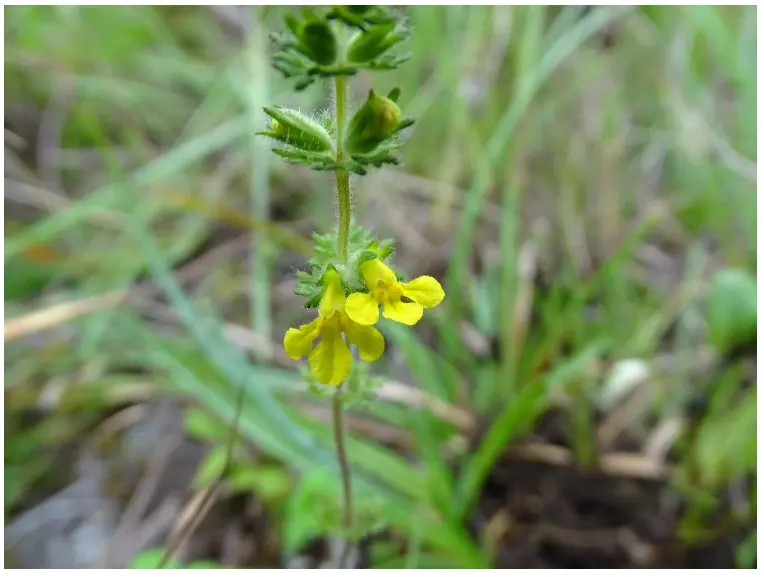
Exploring Phtheirospermum lushaiorum
- Introduction
- Phtheirospermum lushaiorum is a recently discovered species of hemi-parasitic terrestrial plant.
- Characteristics of Hemi-parasitic Plants
- Hemi-parasitic plants, like Phtheirospermum lushaiorum, lack a fully developed root system and establish connections with another plant to acquire water and minerals.
- Despite their parasitic nature, these plants possess chlorophyll and conduct photosynthesis to produce their own food, albeit often relying partially on their host for sustenance.
- They utilize specialized structures called haustoria to tap into the sap-conducting tissue of the host plant.
- Discovery and Habitat
- The new species was identified within the confines of Phawngpui National Park in Mizoram.
- Phtheirospermum lushaiorum attaches itself to the roots of its host, resembling typical plants growing in soil.
- Life Cycle
- Flowering of Phtheirospermum lushaiorum occurs exclusively from July to September, with fruit production observed between August and October.
- Cultural Significance
- The specific epithet "lushaiorum" is derived from the "Lushai" tribe of Mizoram, paying homage to the indigenous community associated with the region.
Source: EM
Supreme Court Ruling on Newsclick: Upholding Due Process
In News: The article delves into the Supreme Court's ruling regarding Prabir Purkayastha, the founder-editor of Newsclick, highlighting the significant role of due process of law as a longstanding measure for assessing a civilization's maturity.
Invalidation of Purkayastha’s Arrest by the Supreme Court
- Grounds of Arrest Not Provided
- The Supreme Court invalidated Purkayastha’s arrest due to the absence of provided grounds, emphasizing the necessity of providing written grounds of arrest to the accused, citing the Pankaj Bansal case of 2023 as precedent.
- It affirmed that the right to be informed about the grounds of arrest is fundamental under Article 22(1) of the Constitution of India, and any violation of this right renders the arrest and remand process invalid.
- Copy of Reasons for Arrest: A Fundamental Right
- The court underscored that individuals arrested under the UAPA or any other offense have the fundamental right to be informed in writing about the grounds of their arrest, with a copy of such grounds furnished promptly and unequivocally.
- Clandestine Procedure Adoption
- The bench noted the secretive manner in which the FIR was withheld from the appellant until after the remand order, condemning it as an attempt to circumvent due process, depriving the accused of legal representation and misleading the court.
- FIR Not an Encyclopaedia
- The judgment clarified that an FIR serves to initiate criminal justice proceedings and is not exhaustive in its details. It stressed the importance of the written grounds of arrest, which should be personal to the accused, enabling them to defend against custodial remand and seek bail effectively.
Concerns Raised by UAPA 1967 Regarding Due Process of Law
- Divergence from Regular Criminal Law
- The UAPA grants extended remand periods and maximum judicial custody periods, differing from standard criminal law procedures, raising concerns about potential abuse.
- Controversy Surrounding Bail Provisions
- Section 43D(5) of the Act imposes stringent bail conditions, making it challenging for suspects to obtain bail without a full trial, a provision criticized for its draconian nature.
- Expanded Scope Over Time
- The UAPA has expanded its scope to cover various activities threatening national security, including economic aspects, with prolonged proscription periods and increased powers since its inception, raising questions about its balance with individual rights.
- High Pendency and Low Conviction Rates
- Despite a significant number of cases under UAPA, conviction rates remain low, and the pendency of cases in courts is notably high, indicating potential flaws in implementation and due process adherence.
Balancing State Security and Due Process of Law
- Clear Legal Framework
- Establish precise laws defining state actions for security, ensuring accountability and preventing misuse. A parliamentary committee could oversee and suggest amendments to security legislation.
- Judicial Oversight
- Strengthen judicial oversight to review state actions and legality of detentions under laws like UAPA, potentially through a judicial review committee.
- Independent Monitoring Bodies
- Create independent bodies to monitor security law implementation and investigate abuses, empowering bodies like the NHRC to hold state actors accountable.
- Human Rights Training
- Provide human rights training for law enforcement to ensure individual liberties are protected while maintaining security, potentially through comprehensive training programs.
- Public Participation
- Engage civil society and the public in security policy discussions to create balanced and widely accepted policies, utilizing platforms like MyGov for public consultations.
- International Cooperation
- Collaborate with international organizations to promote press freedom and share best practices, aligning with initiatives like the UN Plan of Action on the Safety of Journalists.
Conclusion
India must ensure that stringent laws like the UAPA do not overshadow fundamental rights. A harmonious balance between state security and individual liberties is crucial for the country's legal and constitutional integrity, reflecting its democratic values and maturity.
|
UPSC Previous Year Questions Prelims (2021) Q. With reference to India, consider the following statements: 1. Judicial custody means an accused is in the custody of the concerned magistrate and such accused is locked up in a police station, not in jail. 2. During judicial custody, the police officer in charge of the case is not allowed to interrogate the suspect without the approval of the court. Which of the statements given above is/are correct? (a) 1 only (b) 2 only (c) Both 1 and 2 (d) Neither 1 nor 2 Ans: B Mains (2019) Q. Indian government has recently strengthed the anti-terrorism laws by amending the Unlawful Activities (Prevention) Act, (UAPA), 1967 and the NIA Act. Analyze the changesin the context of prevailing security environment while discussing scope and reasons for opposing the UAPA by human rights organizations. |
Source: IE
Share the article
Edukemy’s Current Affairs Quiz is published with multiple choice questions for UPSC exams
MCQ
Get Latest Updates on Offers, Event dates, and free Mentorship sessions.

Get in touch with our Expert Academic Counsellors 👋
FAQs
UPSC Daily Current Affairs focuses on learning current events on a daily basis. An aspirant needs to study regular and updated information about current events, news, and relevant topics that are important for UPSC aspirants. It covers national and international affairs, government policies, socio-economic issues, science and technology advancements, and more.
UPSC Daily Current Affairs provides aspirants with a concise and comprehensive overview of the latest happenings and developments across various fields. It helps aspirants stay updated with current affairs and provides them with valuable insights and analysis, which are essential for answering questions in the UPSC examinations. It enhances their knowledge, analytical skills, and ability to connect current affairs with the UPSC syllabus.
UPSC Daily Current Affairs covers a wide range of topics, including politics, economics, science and technology, environment, social issues, governance, international relations, and more. It offers news summaries, in-depth analyses, editorials, opinion pieces, and relevant study materials. It also provides practice questions and quizzes to help aspirants test their understanding of current affairs.
Edukemy's UPSC Daily Current Affairs can be accessed through:
- UPSC Daily Current Affairs can be accessed through Current Affairs tab at the top of the Main Page of Edukemy.
- Edukemy Mobile app: The Daily Current Affairs can also be access through Edukemy Mobile App.
- Social media: Follow Edukemy’s official social media accounts or pages that provide UPSC Daily Current Affairs updates, including Facebook, Twitter, or Telegram channels.

